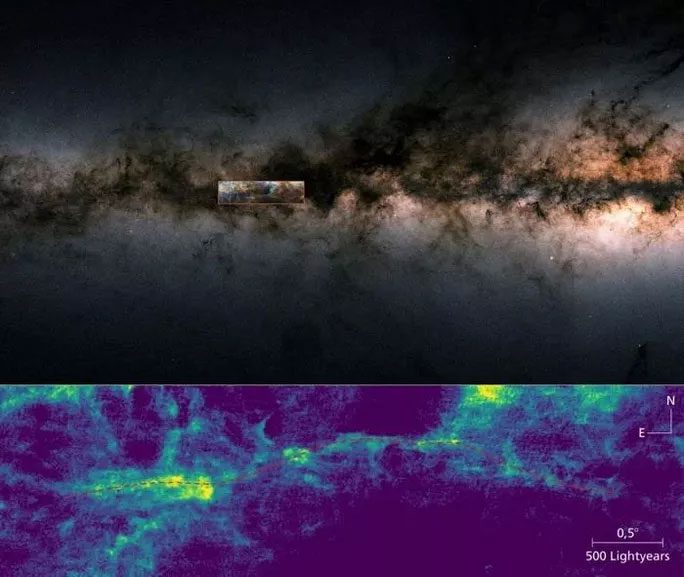Maggie is a mysterious, filamentous structure, previously unknown, and is one of the largest things ever observed in the galaxy containing Earth, the Milky Way.
According to a publication in Astronomy & Astrophysics, based on data obtained from the THOR project, an observational program utilizing the Karl G. Jansky Very Large Array (VLA) telescope system located in New Mexico, scientists have identified Maggie, which resembles a gigantic cosmic serpent made of hydrogen, coiling across the far side of the Milky Way galaxy.

Stunning image of Maggie – (Image: ESA/Gaia/DPAC/T. Müller/J. Syed/MPIA)
It is an exceptionally large molecular gas cloud. While the largest known molecular gas clouds previously measured about 800 light-years in length, Maggie reaches a size of 3,900 light-years and spans up to 130 light-years in width.
According to Dr. Henrik Beuther, the head of THOR, as reported by Science Alert, the observations have allowed them to determine the velocity of the hydrogen gas in Maggie, finding it to be relatively uniform from one end to the other, indicating that Maggie is a very coherent object. The name Maggie was inspired by the longest river in his home country of Colombia: Río Magdalena, which is anglicized as Margaret or Maggie.
Maggie is an object that has existed since the early dawn of the universe.
This international study involves the Max Planck Institute for Astronomy (MPIA), where Dr. Beuther is based, the Harvard-Smithsonian Center for Astrophysics (CfA), the Max Planck Institute for Radio Astronomy (MPIFR), the University of Calgary, the University of Heidelberg, the Center for Astrophysics and Planetary Science, the Argelander Institute for Astronomy, the Indian Institute of Science, and NASA’s Jet Propulsion Laboratory (JPL).





















































